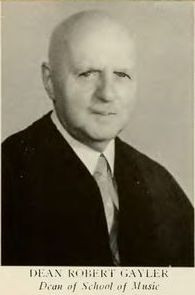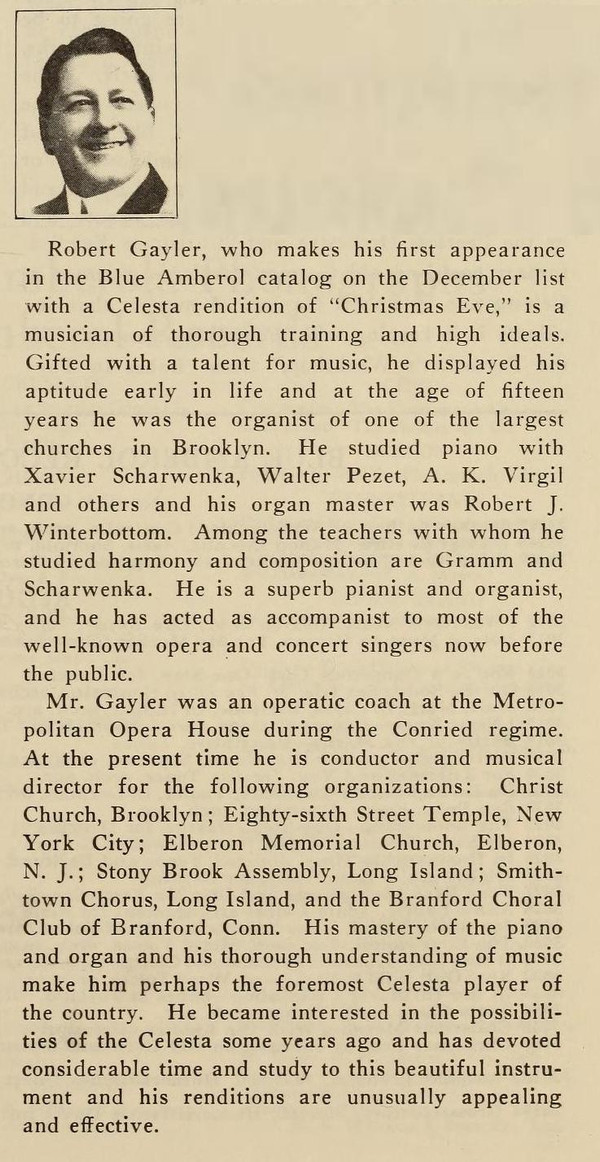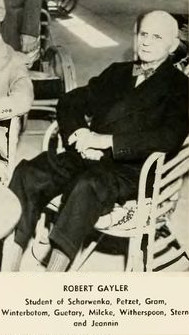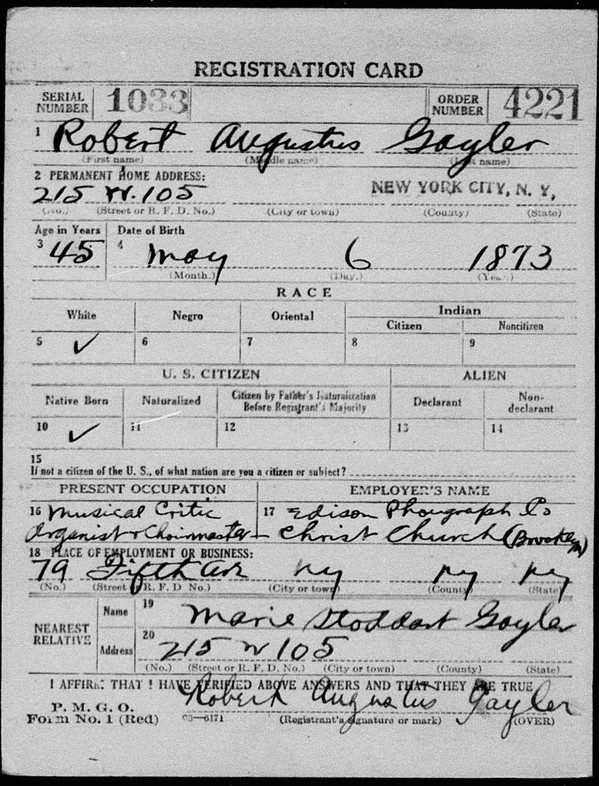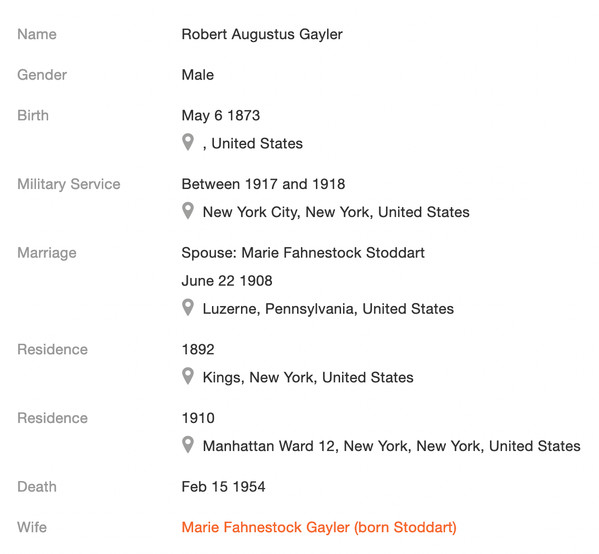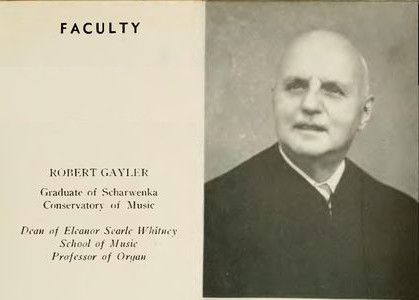Robert Gayler
Настоящее имя: Robert Gayler
Об исполнителе:
Robert Gayler (6 May 1873, New York — 15 February 1954, Interlachen, Florida) was an American pianist, organist, celesta player, arranger, and music pedagogue. He worked at Edison Records between 1916 and 1937, supervising the New York Recording Studio team and appearing on numerous releases as an accompanist. In later years, Gayler taught at the Florida Southern College, serving as Professor of Organ and Dean of the School of Music. He was married to soprano singer Marie Fahnestock Stoddart (1878—1939). Gayler showcased a natural talent in early childhood; at fifteen, he already worked as an organist at one of the largest churches in Brooklyn. Robert studied piano with Xaver Scharwenka and Almon Kincaid Virgil (1842—1921), among others, and organ with Robert J Winterbottom (1855—1941). Between 1903 and 1908, Robert Gayler worked as an operatic coach at The Metropolitan Opera House. He established a prolific stage career, performing as a piano accompanist with renowned opera and concert singers and cited among the country's foremost Celesta players (also called a "bell-piano" and invented circa 1860s, it was a hammer-struck idiophone with a keyboard about the size of an upright piano). Gayler served as a conductor and musical director at several churches and ensembles in Brooklyn, New Jersey, Long Island, and Branford, Connecticut. He joined Edison Laboratories in late 1916, appearing in the November issue of Edison Phonograph Monthly with a short bio and his Celesta rendition of "Christmas Eve" released on Blue Amberol 4-minute cylinder. Gayler subsequently made records on other mediums, including the short-lived "Royal Purple Amberol" series (identical to Blue Amberol but dyed in the distinctive bright purple as a marketing ploy) and several generations of vertical-cut Diamond Discs, from the earlier embossed records to the latest printed "white paper" label editions. In 1919, Robert Gayler participated in the iconic series of Sergei Rachmaninoff's recordings, where he performed original works on "S. D. Lauter & Co" concert grand (one of the few models produced by Newark-based manufacturer founded by German-American piano maker Solomon David Lauter (1827—1885) in 1862). The label's founder and great inventor, Thomas Edison, was practically deaf, with only 20% hearing left in his right ear (after scarlet fever and head trauma in his teenage years). An engineer and technician first and foremost, Edison wasn't even a music lover and lacked sophistication, knowledge, or particular taste. Nevertheless, he insisted on personally vetting the catalog and approving each signee. In the 2007 biography "The Wizard of Menlo Park," its author Randall Stross gives a few examples of Edison's notoriously bad A&R decisions; he rejected most popular songs as "miserable dance and ragtime selections," claimed that jazz was "for the nuts" and compared one performance with "the desperate moan of dying animals," and discarded The Metropolitan Opera as "lacking tune." Unsurprisingly, Thomas Edison declared an awkward, tall Russian genius Rachmaninoff, with his unprecedented technique as a mere "pounder" in the first audition. Robert Gayler and the label staff had to beg and plee with Edison to reconsider his dismissive opinion before he finally agreed to sign a ten-record deal.

